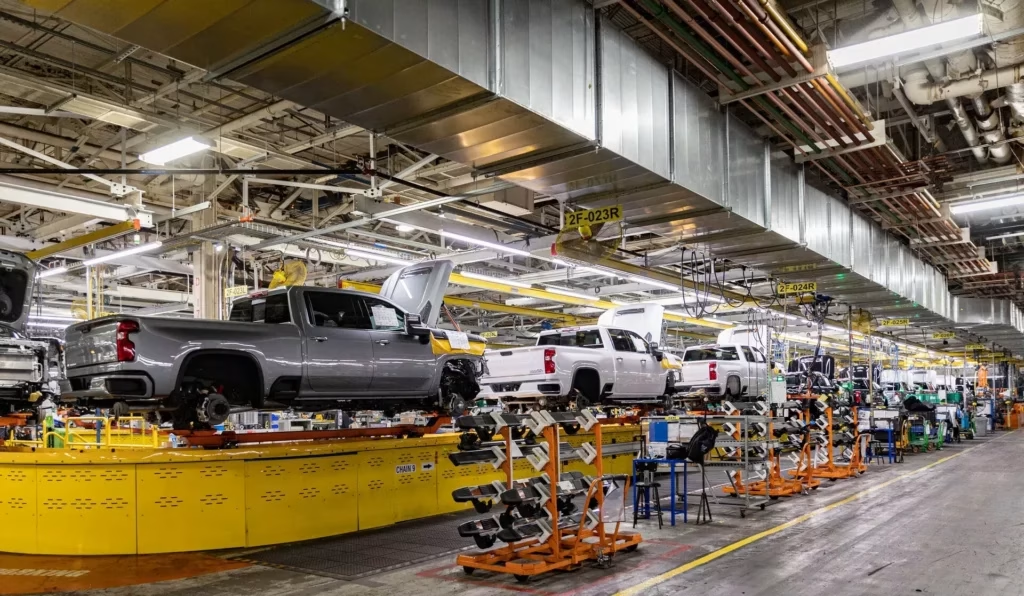The automotive industry is currently navigating a complex landscape shaped by tariffs and trade agreements, particularly in North America. Recent developments surrounding the United States-Mexico-Canada Agreement (USMCA) have brought some relief to parts suppliers, especially those in Mexico, who are now able to avoid hefty tariffs on compliant parts. Let’s dive into what this means for the industry and the broader implications for manufacturers and consumers alike.
What’s the Deal with Tariffs on Auto Parts?
The backdrop to this situation is the tariffs introduced by the Trump administration, which initially threatened to impose a 25% duty on non-US parts. This move sent shockwaves through the automotive sector, raising concerns about production costs and vehicle prices. However, recent amendments have allowed parts that comply with the USMCA to be exempt from these tariffs. This is a significant win for parts suppliers, particularly in Mexico, which is the largest exporter of auto parts to the United States.
The good news doesn’t stop there. Suppliers can also apply for an offset against parts tariffs for up to two years, giving them a crucial window to adjust their production strategies. This flexibility is vital as it allows companies to shift their manufacturing bases back to the U.S. without the immediate pressure of tariffs, which could have led to further disruptions in the supply chain.
Why Is Mexico So Happy About This?
Mexico’s automotive industry is breathing a sigh of relief with the USMCA exemption. President Claudia Sheinbaum has publicly welcomed the news, highlighting how it represents a significant improvement in trade conditions compared to previous scenarios. The preferential treatment for auto parts produced within the trade agreement means that Mexican suppliers can continue to thrive without the burden of additional costs that would have made them less competitive.
This exemption is particularly critical as it helps maintain the flow of parts necessary for U.S. manufacturers, ensuring that production lines remain operational and that consumers can access vehicles without drastic price increases. However, it’s important to note that this exemption does not apply to vehicles produced outside the USMCA framework, which means that imported vehicles will still face those 25% tariffs.
How Will This Impact Vehicle Prices?
While the exemption for compliant parts is a positive development, the broader implications of tariffs on imported vehicles are still a concern. The 25% tariffs on cars imported from outside the USMCA are likely to lead to higher prices for both new and used vehicles. As dealers work through existing inventory that was purchased before the tariffs were announced, consumers may notice a spike in prices as the market adjusts.
Manufacturers are also responding to these tariffs by committing to increase production capacity within the United States. This shift could eventually lead to a more stable supply chain and potentially lower prices in the long run, but for now, consumers may feel the pinch.
What’s Next for the Automotive Industry?
As the automotive landscape continues to evolve, the focus will likely shift toward how manufacturers adapt to these new regulations. The ability to produce parts domestically and the exemption from tariffs provide a pathway for companies to innovate and streamline their operations. However, the ongoing tariffs on imported vehicles will remain a significant hurdle.
In summary, while the recent changes to the tariff regime offer some relief to parts suppliers and manufacturers, the complexities of the automotive market mean that challenges still lie ahead. The interplay between domestic production incentives and international trade policies will shape the future of the industry, impacting everything from manufacturing strategies to consumer prices.
The big takeaway? Navigating the automotive industry’s current landscape isn’t about perfection—it’s about making smarter adjustments. Start by keeping an eye on how these changes affect your vehicle choices and be ready to adapt as the market evolves.

